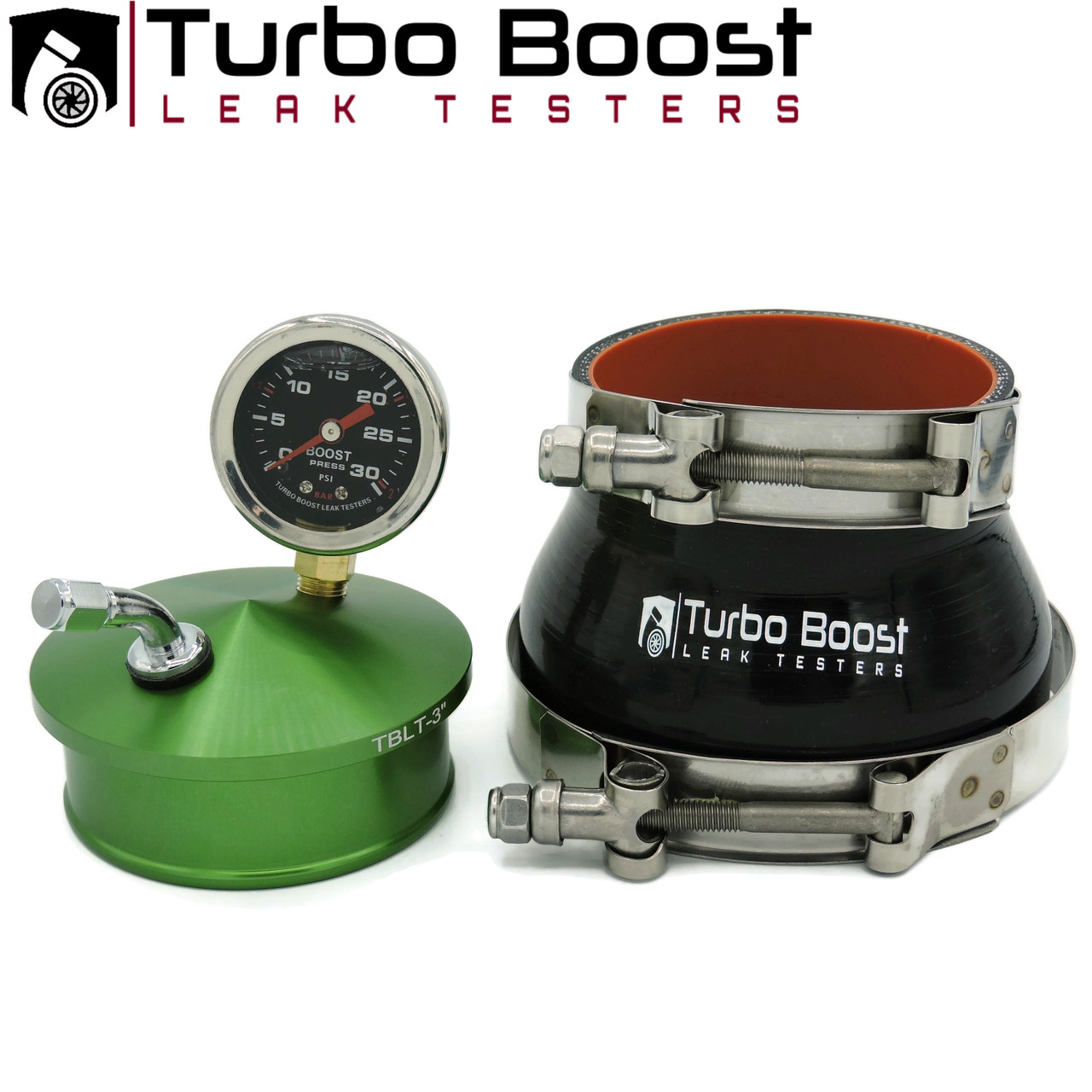Product Description
Get your boost back!
This boost leak tester is designed to fit over the inlet flange of your turbo charger and allows you to pressurize the turbo and charge system with compressed air while the vehicle is off.
Measure the inlet of your top mount turbo to confirm this 4" boost leak tester will work - This size is very common among many turbos, Borg Warner, Garrett, Precision running the anti-surge housings
This is an important tool that every turbo car owner needs in their arsenal of tools. It is going to keep the turbo healthy by eliminating leaks in the boost path and not allowing it to over speed compensating for a boost leak. It is a must if you are tuned and or going to get a custom tune, or any time you are replacing any components in the intake tract such as charge hoses, intercooler, manifold, vacuum lines, injectors…etc. Also a must if you are going to the track and want the peace of mind that everything is tight and capable of handling sustained boost without blowing any hoses off
Why the Gauge?
Not having a gauge readout on a boost leak test is similar to filling air in your car's tire without a gauge. You just don't know how much air is in the system!
It is very wise to know how much pressure is actually going into the charge system to prevent damage to your engine and to yourself - Example if the compressor is unregulated (using high pressure shop air at 90 PSI) there is a risk that the charge pipes will be over-pressurized and something will give - the boost leak tester could blow off or any component of the engine could.
The gauge on the boost leak tester allows the user to:
- apply a safe amount of pressure to prevent injury or damage to the charge pipes or engine
- read how fast the system holds and bleeds air after removing the air source
- give a good comparison of compressor outlet air Vs. boost test air while pressurizing. The smaller the difference the lesser the air loss in the system
Design Features:
- Billet 6061 Aluminum End Cap with 1/8" NPT threaded gauge port & 1/4" NPT fitting port
- High quality silicon coupler3"-4"
- Custom Stainless Steel 30 PSI / 2 Bar Boost Gauge
- 30 PSI range will give you the appropriate reading when testing your charge pipes for low, medium or high boost levels.
- Universal Tire Schrader Valve and 1/4" NPT Compressor fitting
- (2) Stainless Steel T-Bolt Clamps with Teflon lock-nut
Lifetime warranty on gauge, end cap and fitting
How do I know if I have a Boost Leak?? Common Symptoms are:
- P-codes, Check engine lights, system too rich
- Excessive Black smoke: (Less boost, More fuel = Un-burnt Fuel)
- Loss of power
- Loud Whistling noise
- Poor Fuel Mileage
- Typically the boost target will be lower than what is expected by the tune
- Boost onset could be erratic
- Slower than normal spool-up
What happens to the turbo charger if there is a boost leak??
Any leak will cause the turbos wheels to over-spin and result in bearing to wear out eventually causing shaft play! This happens faster with larger leaks. This conditions then allows for the turbos wheel tips to make physical contact with the turbo housing. Its over for your turbo at that point!
Simple Steps to Use the Boost Leak Tester:
- Remove the intake hose/pipe off your turbo chargers inlet
- Install the boost leak tester onto the turbo chargers inlet and secure with the T-bolt clamps
- Pressurize the boost leak tester with an air compressor and a tire inflator tool. The air compressor should be a minimum of 2 gallon volume. The larger the compressor, the more capacity you have to fill the engines charge pipes. A bike pump or electric pump will not supply enough air fast enough to fill the system
- *Caution! - When filling the system, start with a low pressure around 5 PSI. Recommended to regulate the compressor to a lower pressure and only increase if filling is too slow. The boost gauge reading indicates how much compressed air is in the charge pipes. The boost gauge allows you to read the bleed rate of charge pipes when you remove the pressure. It is normal to see pressure loss average of 1psi every second. Faster bleed rate at higher pressures and slower bleed rate at lower pressures
- Listen for leaks. Use soapy spray if necessary to identify smaller leaks.
- Fix any leaks points and then retest. Increase by 5psi up to the normal operating boost pressure.
- Go out and Boost! Enjoy the restored power from your engine!











